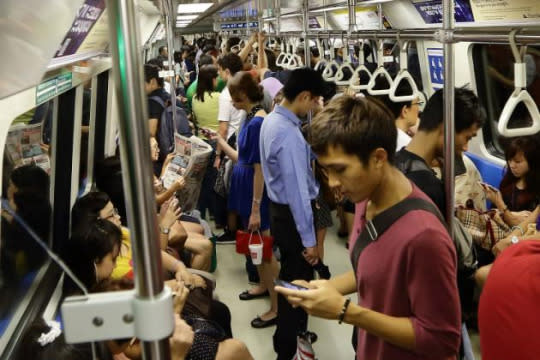Will pulling 2G networks in Singapore affect the elderly?

Singapore telecoms will be ceasing all 2G networks come April 2017. Photo: Getty Images
By: Sheryl Teo
The typical 3G or 4G smartphone user in Singapore may be indifferent towards the withdrawal of 2G networks, but this may incur much inconvenience to those who do not need complex data plans such as foreign workers and senior citizens, as well as those who need to switch down when network usage is heavy.
2G mobile services will completely cease in April 2017, as announced Monday by the three local telcos SingTel, M1 and StarHub, together with the Infocomm Development Authority of Singapore (IDA).
IDA had previously revealed an estimated 250,000 people still use 2G networks in Singapore, mostly using prepaid subscriptions. This is a significant decrease from the two million 2G subscribers in Singapore exactly four years ago, in June 2011.
While this evidently shows that 2G network is a sunset technology and that many have upgraded, there are still some 3G users who will be affected by this withdrawal.
Sam Cho, a 23-year-old undergraduate at a local university, said that he still switches from a 3G to 2G network from time to time, even though he subscribes to the former.
“When the mainstream network is dead and congested, for instance during the New Year countdown, switching to 2G at least allows us to load something – like messages,” he said.
“Basically, 2G serves as my back-up in case of emergencies.”
Elderly may not need complex data plans: telco professional
35-year-old telecom industry professional Zhuang, who only wanted to be known by his surname, explained to Yahoo Singapore that 2G networks still have value.
“It is the use of Internet access. 2G is simply calling and texting, without usage of mobile data. 3G has the affordance to do everything from calling, texting, and surfing the net,” Zhuang said.
He also raised a concern: “Pulling out 2G might pose a problem for older folks, as they often do not need complex data plans like the younger generation does.”
“Most of the older folks, at least in Singapore, would think that the basic affordance of a handphone such as calling and texting is enough for their communication needs. They may be reluctant to navigate through relatively complex data phones,” he adds.
An IDA spokesperson confirmed that out of the 250,000 users still on the 2G network, about half of them are foreigners.
When queried as to why 2G was being removed, IDA referred Yahoo Singapore to a press release where it stated that “IDA took into consideration the evolving technology landscape and the migration of consumers to 3G and 4G technologies, which offer more service features and higher broadband speed”.
It is understood that the telcos will begin outreach efforts to facilitate the upgrading of subscriptions and handphones.
Many neighbouring countries in the Asia Pacific region, including Korea and Japan, have already abolished 2G networks.

